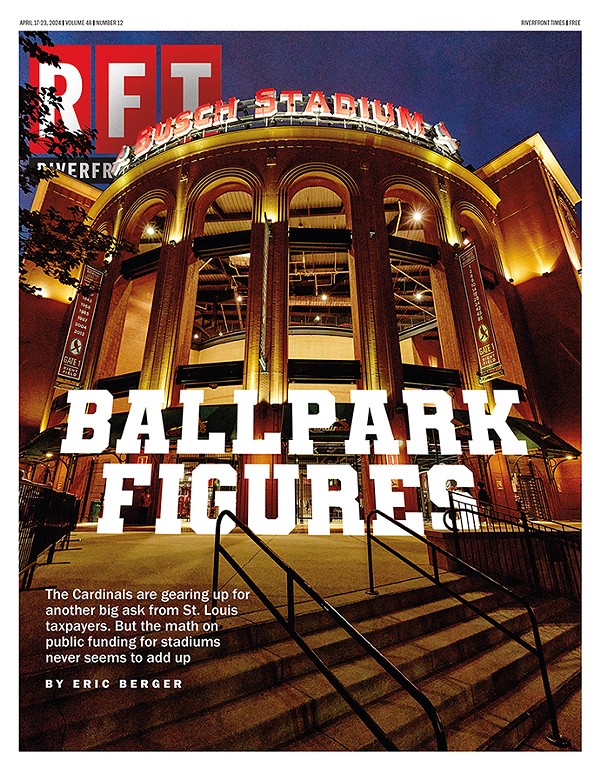Once the performance begins, the answer isn't long in coming. By the time the opening number -- an in-your-face arrangement of Ravel's "Bolero" -- has reached its pulsating crescendo, you realize that Blast is a unique, joyous and dazzlingly professional piece of stagecraft. Throughout the brief but explosive evening, 58 virtuoso performers work their androgynous way through 295 percussion and brass instruments, not to mention 25 didgeridoos (a long Australian wind instrument that can double as a mailing tube). While these young musicians (only two are older than 30; most are under 25) are playing glockenspiels, cymbals, cowbells and chimes, members of the visual ensemble are busy hurling anything that will soar: flags, rifles, batons -- everything except pompoms.
This is a curious (if conscious) omission, because Blast has its roots in the panoply of high-school marching bands. If that notion is enough to give you pause, take note: It has outgrown those roots, with a vengeance. This high-tech spectacle is influenced more by The Matrix than by "76 Trombones." But spectacle merely for the sake of spectacle can end up as so much sound and fury. Here, what might have come off as an extended drum-and-bugle-corps routine with an inflated ego instead is a triumph of imagination and intelligence.
Imagination in the fusion of sound, color, light and movement. Intelligence in the intriguing choice of source material. In addition to Ravel, there are interpretations of Aaron Copland, Samuel Barber, Leonard Bernstein. Blast may offer the only occasion when you'll laugh at West Side Story's "Gee, Officer Krupke" without even hearing the clever Stephen Sondheim lyrics. And Chuck Mangione's "Land of Make Believe" plays like a melodic Dreamsicle. Where Blast disappoints -- and for me, the only disappointing thing about it -- is that Act 2 fails to build on what has gone before. In Act 1, the surprise of the concept, coupled with the surprise of its visceral impact, is enough to compel the viewer's rapt attention. But Act 2 is merely variations on a theme. One production number is witty, another charming. But by now, the newness has worn off, and there's little build. Were the creators to trim a few numbers, then consolidate the show into one long, intermissionless act, they would have a seamless evening. (Of course, they wouldn't sell as many posters and CDs that way.)
It's during those occasional moments of Act 2 tedium that you are afforded time to ask yourself: Is what I'm watching here on the stage of the Fox Theatre really theater? The answer, of course, is no. Blast is no more theater than John Lennon's song lyrics are poetry. Its creators seem to know that. They aptly describe their prodigy as "a new musical stage experience."
But for now (and right up until we are inundated by so many Blasts, Riverdances and Stomps that they begin to smother traditional musical fare), "theater" will have to learn to share the stage with "theatricality." Blast has that in extravagant abundance.





